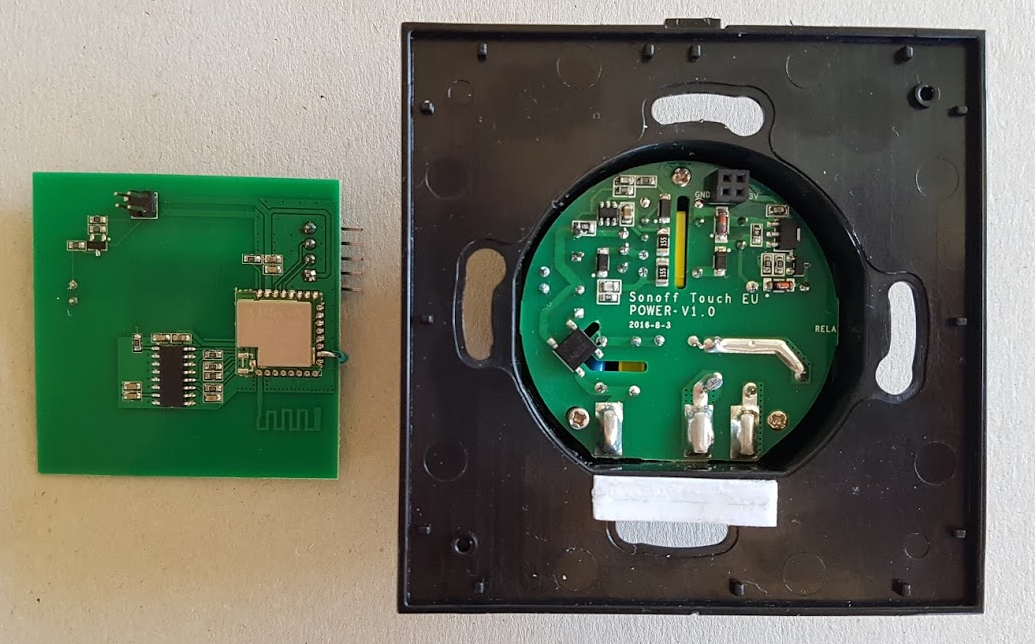Sonoff touch and new DingSwitch 1.1
I have had the Sonoff touch laying around for some time now, and in this post I will give a quick review and install a new DingSwitch version. (Available for down at the bottom of this post). The new DingSwitch version 1.1 is now translated to English and has a few bugfixes.
This is the Sonoff touch “EU” version, you can also get it in a US version. (For the Danish reader: it is a few millimeter too big to fit is the danish standard)
The front of sonoff touch The back of sonoff touch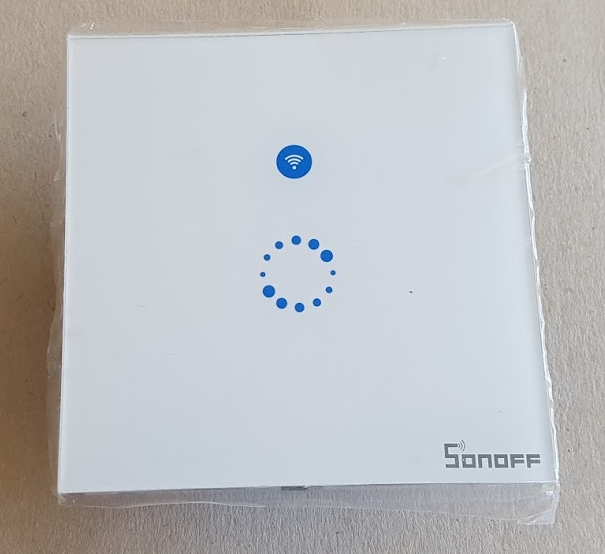
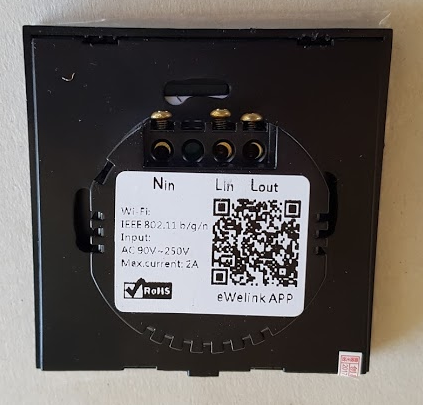
The biggest difference from the other sonoff devices I have been looking at, is that this one is based on esp8285 where the other are esp8266. The only difference I can see is that 8285 has build in 1MB flash, and for some reason I do not know, you have to compile specifically for esp8285.
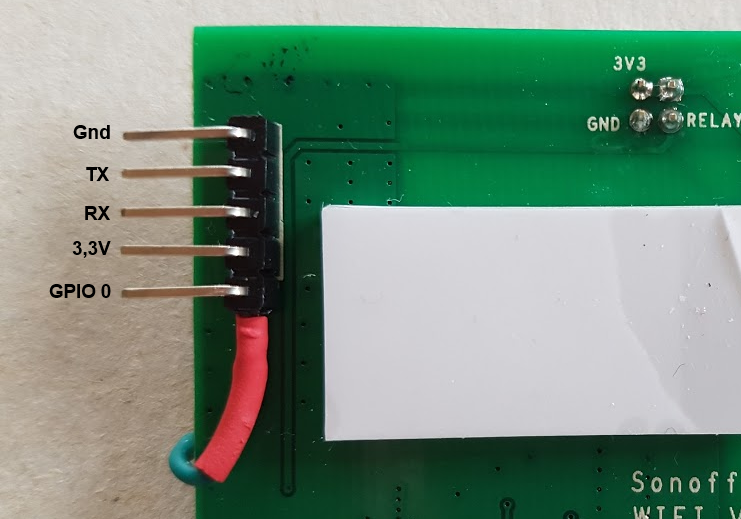
As with esp8266 you need to have access to GPIO 0 to put the device into flash mode. I made the modification you can see above.
New dingswitch version 1.1
In my first attempt I just uploaded the existing dingswitch firmware. it uploads without problems, but did not run at all. After recompiling for esp8285 it worked like expected. Here are the Sonof touch settings for led, button and power relay:
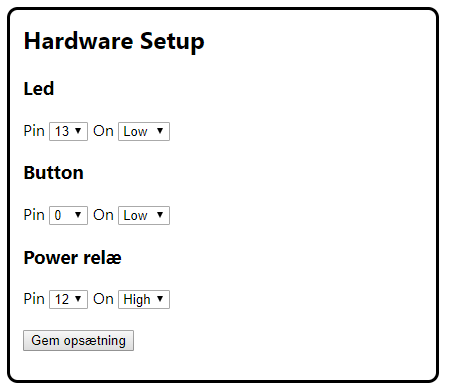
DingSwitch 1.1 Download
Before download read the disclaimer
There are 2 version new one for esp8285 and one for esp8266:
DingSwitch 1.1 esp8285 (Sonoff touch)
OTA update
If you have already been using the previous version you can update using the url
http://my-ding-siwtch-ip/update
Select the firmware bin file and click update.
Clearing EEPROM
DingSwitch save the settings i EEPROM so re-flashing will not lose the DingSwitch settings. If you by accident have type a wrong button pin or forgot the password, you can reset the EEPROM using this small program:
[code language=“cpp”] include <EEPROM.h>
void setup() { EEPROM.begin( 512); for( int i = 0; i < 512; i++) EEPROM.put( i,0); EEPROM.end(); }
void loop() { } [/code]
You can find the original post about DingSwitch 1.0 here (Note this post is in danish - use google translate)
P.S
If you do not have a sonoff device but would like to try DingSwitch you can do it on a regular esp8266.
